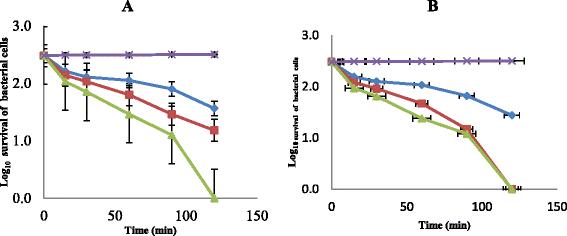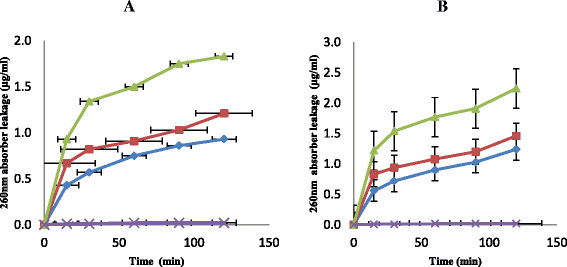Biocidal effects of stem bark extract of Chrysophyllum albidium G. Don on vancomycin-resistant Staphylococcus aureus
- PMID: 27004526
- PMCID: PMC4802705
- DOI: 10.1186/s12906-016-1080-6
Biocidal effects of stem bark extract of Chrysophyllum albidium G. Don on vancomycin-resistant Staphylococcus aureus
Abstract
Background: Staphylococcus aureus causes variety of infections in humans and animals worldwide and predominates in surgical wound infections. This study assessed the antimicrobial potential of the stem bark extract of Chrysophyllum albidum against an array of vancomycin resistant Staphylococcus aureus (VRSA) isolated from clinical samples.
Methods: The methanolic crude extract of the plant was preliminary screened for the presence of phytochemicals; after then, the extract was partitioned into n-hexane, chloroform, ethyl acetate and butanol fractions. A range of concentrations of the plant extract fractions was prepared to assess its antimicrobial potency; the minimum inhibitory concentrations (MICs); the minimum bactericidal concentrations (MBCs); the rate of killing; the potassium ion leakage potential and nucleotides leakage ability against the VRSAs.
Results: The phytochemical screening revealed the presence of tannins, alkaloids, flavonoids, saponins, steroids, reducing sugars and terpenoids as major phytoconstituents resident in the crude plant extract. The two active fractions (n-hexane and butanol) at a concentration of 10 mg/ml exhibited antibacterial activities with the MIC and MBC values for the fractions ranged between 0.63-10 mg/ml and 1.25-10 mg/ml respectively. The time kill assay revealed that the antibacterial action of the two fractions are time and concentration dependent; the n-hexane and butanol fractions achieved 100 % kill on the test isolates at a concentration of 3 × MIC and 2 × MIC respectively after 120 min of reaction time. Varying amount of potassium ions as well as nucleotides were leaked from the test cells by n-hexane and butanol fractions.
Conclusions: This study has established the possibility of developing antimicrobial agents of natural origin to manage possible infection from vancomycin resistant Staphylococcus aureus that are now developing multi-resistance against many antibiotics.
Keywords: Chrysophyllum albidum; Clinical samples; Methanolic extract; Minimum bactericidal concentrations; Minimum inhibitory concentrations; Nucleotide; Phytochemicals; Potassium ion; Time kill; Vancomycin resistant Staphylococcus aureus.
Figures

 ), 2 × MIC (
), 2 × MIC ( ), 3 × MIC (
), 3 × MIC ( ) and control (
) and control ( ). Each point represents the log10 of mean survival of bacterial cells at a particular time interval in the presence of the fraction
). Each point represents the log10 of mean survival of bacterial cells at a particular time interval in the presence of the fraction
 ), 2 × MIC (
), 2 × MIC ( ), 3 × MIC (
), 3 × MIC ( ) and control (
) and control ( ). Each point represents the amount of potassium ions leaked (μg/ml) from the cells at a particular time interval in the presence of the fraction
). Each point represents the amount of potassium ions leaked (μg/ml) from the cells at a particular time interval in the presence of the fraction
 ), 2 × MIC (
), 2 × MIC ( ), 3 × MIC (
), 3 × MIC ( ) and control (
) and control ( ). Each point represents the quantity of nucleotides leaked (μg/ml) from the cells at a particular time interval in the presence of the fraction
). Each point represents the quantity of nucleotides leaked (μg/ml) from the cells at a particular time interval in the presence of the fractionReferences
Publication types
MeSH terms
Substances
LinkOut - more resources
Full Text Sources
Other Literature Sources
Medical

